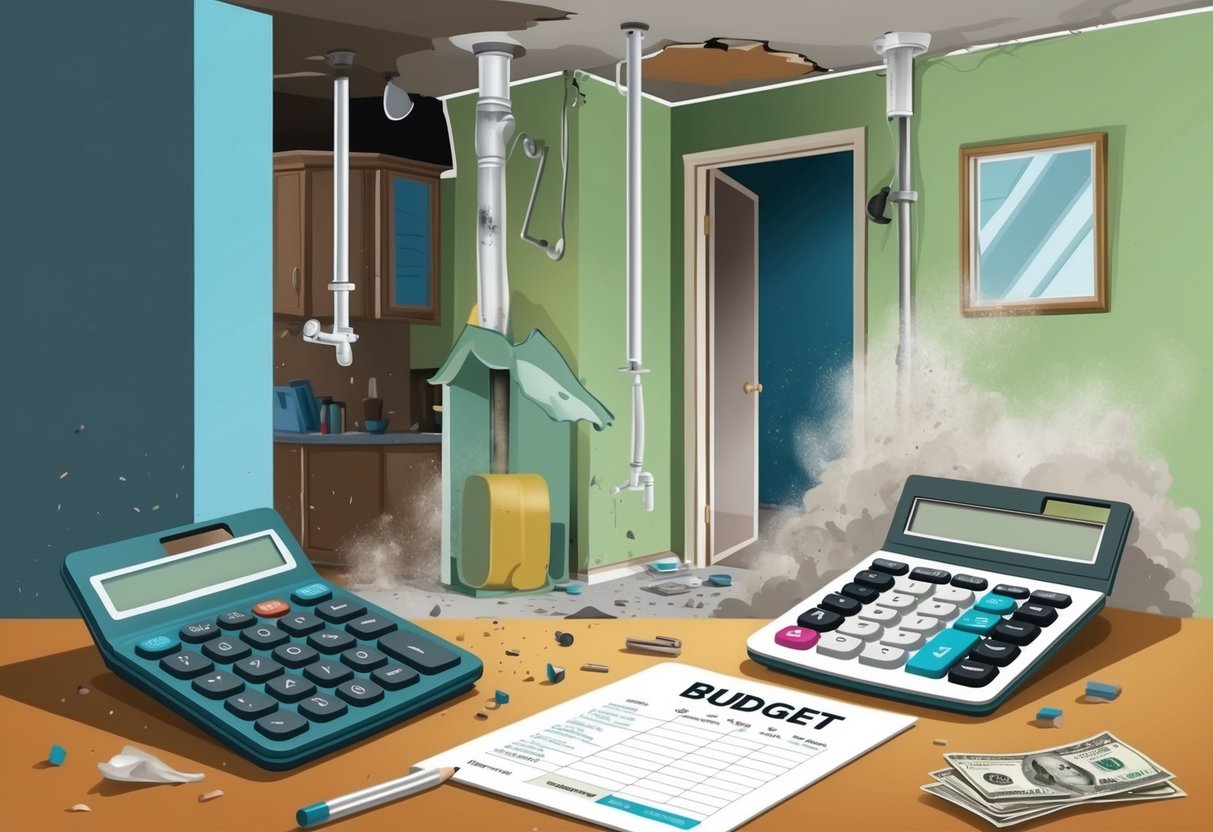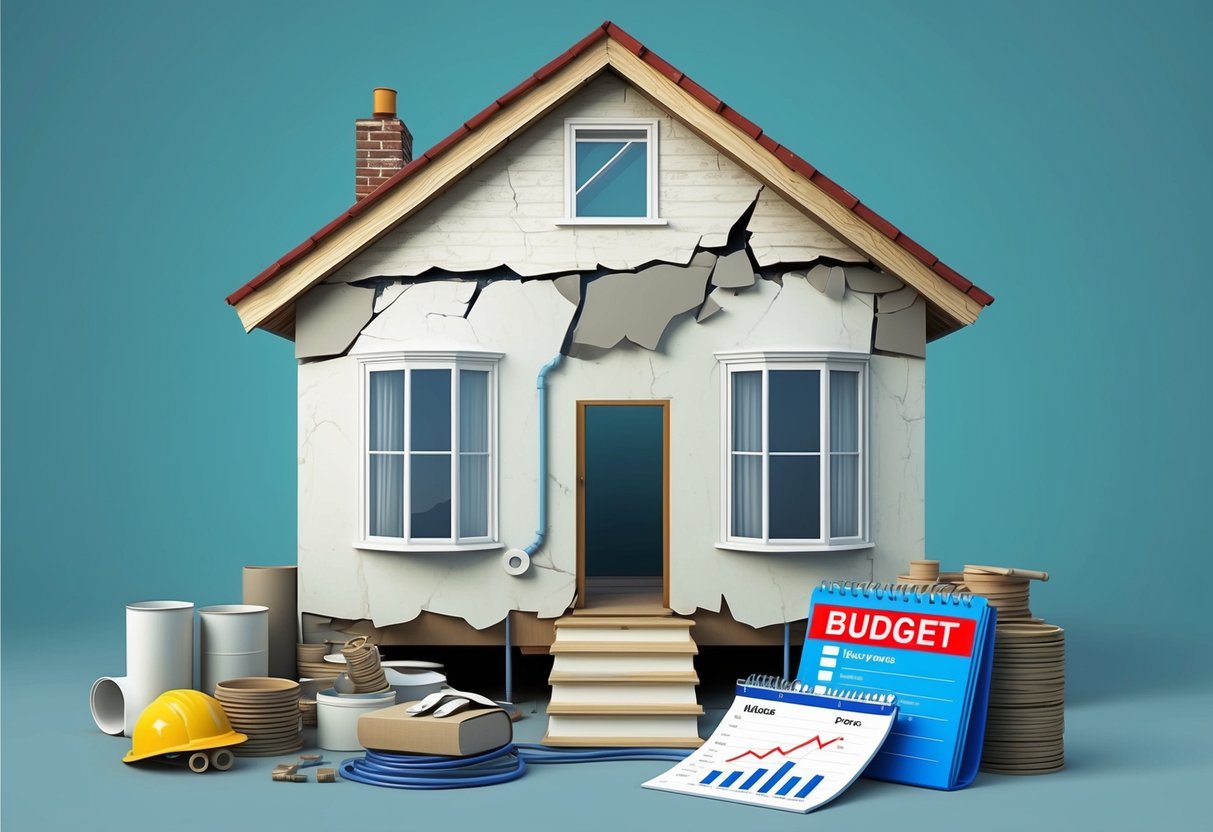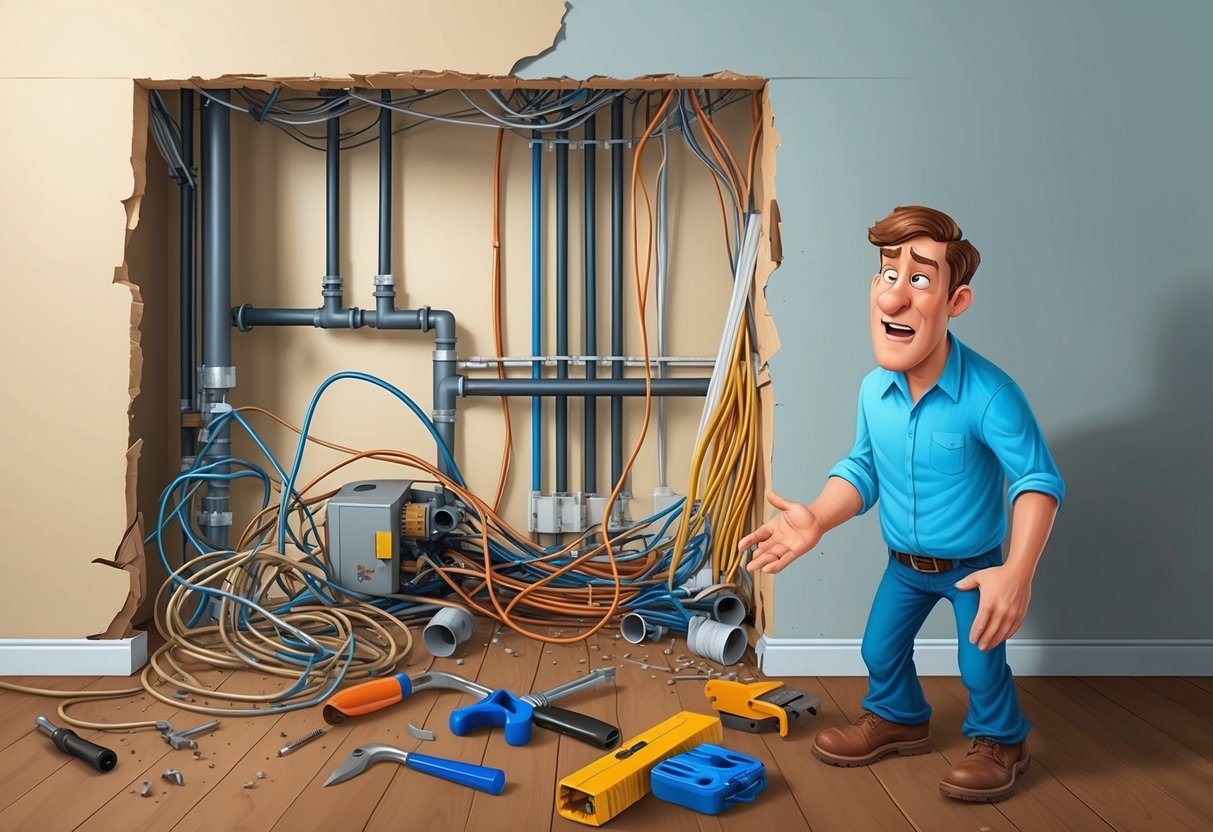
Hidden Structural Issues

Unexpected structural issues during a home remodel can result in significant delays, added expenses, and extra stress. Addressing problems like hidden foundation cracks, broken joists, water intrusion, or mold growth often requires immediate attention and extra budget planning.
Discovering and Repairing Structural Damage
Homeowners frequently encounter structural problems that are not visible until walls, floors, or ceilings are opened during a renovation. Common types of hidden damage include foundation cracks, decayed support beams, sagging floors, and compromised joists.
Repairing structural defects is usually one of the most expensive surprises because it may involve engineering assessments, reinforced materials, local building code updates, and increased labor costs. Many contractors recommend adding an extra 10%–20% contingency to your renovation budget to account for these hidden remodeling costs.
Early detection and prompt repairs help prevent further damage and larger repair bills. Homeowners should also be prepared for possible disruptions to project timelines when these issues are uncovered.
Addressing Water Damage and Mold
Water damage is one of the leading culprits behind hidden structural issues in older and newer homes alike. Leaky roofs, broken pipes, or poor drainage can cause rot in wooden framing, weaken subfloors, and damage drywall.
Prolonged moisture problems often result in mold growth that poses health risks and leads to more complex remediation needs. The remediation process typically involves removing and replacing damaged materials, cleaning affected areas, and addressing the original source of moisture to prevent recurrence.
In some cases, costs increase due to the need for specialized mold remediation contractors and safety precautions. Homeowners should anticipate additional expenses for proper inspection and abatement, especially when water damage or mold was not visible at the start of the remodel.
Detailed inspections by licensed professionals help uncover many of these hidden costs of renovation.
Plumbing and Electrical Surprises

Unexpected issues with plumbing and electrical systems are some of the most common causes of escalating home renovation budgets. Such problems often go unnoticed until walls are opened, potentially resulting in costly repairs and compliance upgrades.
Upgrading Outdated Plumbing
Old or corroded pipes frequently need replacement during home remodels, especially in houses built before the 1980s. After demolition starts, contractors often discover galvanized pipes, aged copper lines, or plumbing that doesn’t meet current building codes.
Common plumbing surprises include leaky joints, hidden water damage, and undetected pipe corrosion. If bathrooms or kitchens are involved, relocating fixtures such as sinks or toilets can increase both material and labor costs.
Plumbers may need to reroute lines, replace shutoff valves, or add new venting. A straightforward replacement of old plumbing can cost thousands, even before patching drywall or tile.
Uncovering issues like inadequate water pressure or outdated sewer lines can require significant upgrades to prevent long-term water leaks and mold growth. Homeowners should budget a contingency fund for plumbing surprises and consult licensed professionals who follow local code requirements.
Electrical System Rewiring
Many home renovations uncover electrical wiring that’s insufficient or unsafe by modern standards. Knob-and-tube wiring, ungrounded outlets, overloaded breaker panels, and DIY fixes are typical issues discovered in older homes.
Electrical upgrades may involve replacing old wiring, adding more circuits for modern appliances, or installing additional outlets and GFCIs. When plans call for wall removal or layout changes, contractors must often rewire to maintain code compliance and ensure home safety.
Rewiring parts of a home is a major expense due not only to new materials, but also extensive labor for running wires through finished walls and ceilings. Occasionally, electrical panel upgrades or whole-house surge protection are recommended, adding to the budget.
Permits, inspections, and professional electricians are required, making these updates critical but often costly surprises during renovations.
Kitchen and Bathroom Renovation Overruns
Unexpected expenses frequently arise when planning kitchen or bathroom upgrades. Budget overruns often happen due to costlier-than-expected materials, appliance choices, and hidden labor charges during the remodeling phase.
Material and Appliance Upgrades
Homeowners often choose materials like quartz countertops, premium flooring, or custom cabinetry during kitchen renovation projects, increasing costs over initial estimates. Mid-project changes or opting for higher-end finishes can drive the budget up by thousands of dollars.
For example, swapping laminate for stone surfaces or upgrading to commercial-grade appliances adds significant expense. Supply chain challenges and regional shortages may also lead to price hikes.
Appliances frequently involve not just base unit costs but also necessary accessories and modifications for fit or compliance. Home improvements in kitchens and baths can exceed original forecasts by 20–30%, as noted by experts, with details found on unexpected costs in kitchen remodeling.
Hidden Installation Fees
Installation work for kitchens and bathrooms often uncovers issues like outdated plumbing, electrical code violations, or structural deficiencies. These problems can require urgent corrections, each adding line items to the budget.
Even basic installations might involve costs for delivery, haul-away of old fixtures, or disposal of debris. Design consultation fees also add up, especially if revisions are needed.
Utility upgrades or moving plumbing lines rarely come standard in base quotes. It is common for homeowners to underestimate these labor and installation fees, which can lead to budget overruns of 10–30%, according to industry insights on hidden remodel costs.
Being aware of these risks helps with financial planning during kitchen and bath projects.